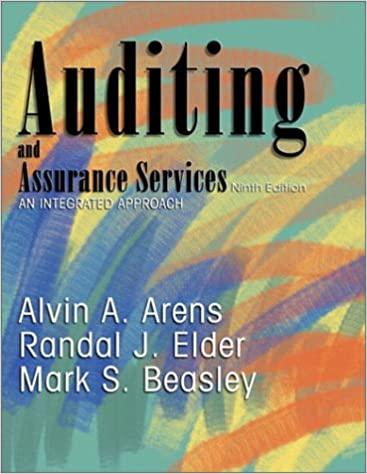

m ical and the risk Ols, the yield spread widens as it did in 2008. Ilal Keturns As with stocks. total returns in the bond m both current income from the bond's interest payments a with stocks, total returns in the bond market are made up of from changes in the bond's value. Table 10.1 lists year-end be bond's interest payments and capital gains (or losses) returns for U.S. government bonds from 1962 through 2011. N ue. Table 10.1 lists year-end bond yields and annual total year-end yields can be from the total returns. The differences are a bonds from 1962 through 2011. Note how different the inverse relation between changes in the market interest rate and bond otal returns. The differences are attributable to the market interest rates rise, bond values fall. During a period of rising rates, to on bonds include capital losses that can sometimes exceed the losses that can sometimes exceed the bonds' current income, Clt Dindice the market interest rate and bond values. When fall. During a period of rising rates, total returns TABLE 10.1 HISTOR HISTORICAL ANNUAL YIELDS AND TOTAL RETURNS FOR TREASURY BONDS Year-End T-Bond T-Bond Annual Yield (%) Year-End T-Bond Total Return (%) Yield (%) Year 1962 3.9 5.7 T-Bond Annual Total Return (%) -5.0 8.2 1963 9.0 9.1 17.7 15.0 14.2 -5.0 16.8 23.5 14.9 Dod olada LO 2.0 Year 1987 1988 1989 1990 1991 1992 1993 1994 1995 1996 1997 1998 1999 2000 2001 2002 2003 2004 2005 2006 2007 2008 2009 2010 2011 9 .oos udalddad 1979 10.4 0.7 -3.0 32.8 12.8 13.7 10.5 11.8 i bora 11.5 09.3 3.2 13.7 10.2 20.1 - 11.1 8.5 16.0 1985 25.7 1986 24.3 Source: Aswath Damoda n Damodaran, The Data Page, http://pages.stern.nyu.edu/-adamodar/. Use the bond returns in Table 10.1 (page 382) as a basis of discussion for the following questions: a. Compare the returns during the 1970s to those produced during the 1980s. How do you explain the difference? b. How did the bond market do in the 1990s? How does the performance in this decade compare to the 1980s? Explain. c. What do you think would be a reasonable rate of return on bonds in the future? (Hint: Think back to the three primary determinants of investors' required rate of return discussed in Chapter 4.) Explain how you arrived at your forecast. d. Assume that you are out of school and hold a promising, well-paying job. How much of your portfolio (as a percent of your total investments) would you want to hold in bonds? What role do you see bonds playing in your portfolio, particularly as you go farther and farther into the future? m ical and the risk Ols, the yield spread widens as it did in 2008. Ilal Keturns As with stocks. total returns in the bond m both current income from the bond's interest payments a with stocks, total returns in the bond market are made up of from changes in the bond's value. Table 10.1 lists year-end be bond's interest payments and capital gains (or losses) returns for U.S. government bonds from 1962 through 2011. N ue. Table 10.1 lists year-end bond yields and annual total year-end yields can be from the total returns. The differences are a bonds from 1962 through 2011. Note how different the inverse relation between changes in the market interest rate and bond otal returns. The differences are attributable to the market interest rates rise, bond values fall. During a period of rising rates, to on bonds include capital losses that can sometimes exceed the losses that can sometimes exceed the bonds' current income, Clt Dindice the market interest rate and bond values. When fall. During a period of rising rates, total returns TABLE 10.1 HISTOR HISTORICAL ANNUAL YIELDS AND TOTAL RETURNS FOR TREASURY BONDS Year-End T-Bond T-Bond Annual Yield (%) Year-End T-Bond Total Return (%) Yield (%) Year 1962 3.9 5.7 T-Bond Annual Total Return (%) -5.0 8.2 1963 9.0 9.1 17.7 15.0 14.2 -5.0 16.8 23.5 14.9 Dod olada LO 2.0 Year 1987 1988 1989 1990 1991 1992 1993 1994 1995 1996 1997 1998 1999 2000 2001 2002 2003 2004 2005 2006 2007 2008 2009 2010 2011 9 .oos udalddad 1979 10.4 0.7 -3.0 32.8 12.8 13.7 10.5 11.8 i bora 11.5 09.3 3.2 13.7 10.2 20.1 - 11.1 8.5 16.0 1985 25.7 1986 24.3 Source: Aswath Damoda n Damodaran, The Data Page, http://pages.stern.nyu.edu/-adamodar/. Use the bond returns in Table 10.1 (page 382) as a basis of discussion for the following questions: a. Compare the returns during the 1970s to those produced during the 1980s. How do you explain the difference? b. How did the bond market do in the 1990s? How does the performance in this decade compare to the 1980s? Explain. c. What do you think would be a reasonable rate of return on bonds in the future? (Hint: Think back to the three primary determinants of investors' required rate of return discussed in Chapter 4.) Explain how you arrived at your forecast. d. Assume that you are out of school and hold a promising, well-paying job. How much of your portfolio (as a percent of your total investments) would you want to hold in bonds? What role do you see bonds playing in your portfolio, particularly as you go farther and farther into the future








